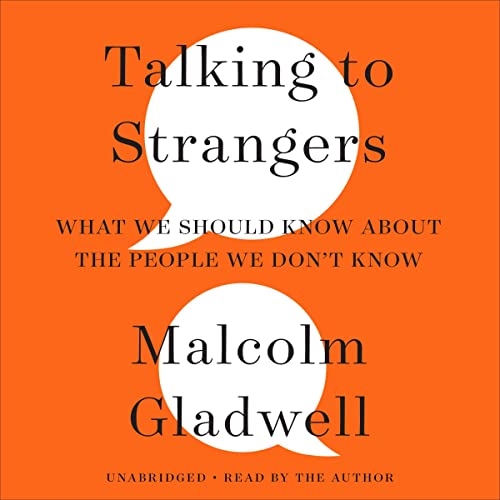- January 4, 2023
- Posted by: Dave Kurlan
- Category: Understanding the Sales Force

CEOs, Sales Leaders, Sales Managers and HR Directors are under water when it comes to sales selection. They get it right about 50% of the time and that includes salespeople who stay but underperform. After reading Malcom Gladwell’s book, Talking to Strangers, I can finally explain why the success rate is so low.
The book begins and ends with a traffic stop that escalates into a questionable arrest and subsequent jail suicide and uses its nearly 400 pages to make sense of what happens when people talk to and judge people they don’t know, or strangers.
While Gladwell used dozens of dramatic and real examples, the one that most closely correlates with today’s topic is the study of NYC judges. Around 550,000 cases were analyzed and the judges’ bail decisions – whether to set bail and for how much – were compared with the decisions of a software program. The judges released 400,000 of those people and the computer had to choose which 400,000 to release. The computer had the exact same information as the judges had in their case files, specifically age and criminal record. The only difference – and it was a big one – the judges had the advantage of being able to look the defendants in the eyes, talk with them and ask questions to make a more informed decision. The criteria for this comparison test was whether the defendants that were allowed out on bail while awaiting trial committed another crime. The computer outperformed the judges by 25%.
Gladwell wrote, “Orchestras made much smarter recruiting decisions once they had prospective hires audition behind a screen. Taking information away from the hiring committee made for better judgments. But that was because the information gleaned from watching someone play is largely irrelevant. If you’re judging whether someone is a good violin player, viewing whether that person is big or small, handsome or homely, white or black isn’t going to help. In fact, it will probably only introduce biases that will make your job even harder.”
I wrote about bias in sales hiring in these two articles:
Those two examples are nearly identical to what happens when salespeople are interviewed. The hiring manager has the candidate’s resume (rap sheet) but unlike a criminal record, resumes are not always grounded in fact. While it’s likely they worked for the companies listed and for the time frames given, claims about success are usually out of context or outright fiction. During the interview, the hiring manager is consistently forming judgments based on their interactions with the candidate.
I learned from the book that people are pretty good at identifying honest people who act honestly, but not honest people who act like liars. Similarly, people are pretty accurate when identifying liars who act like liars but not liars who act honestly. Experts like judges, the CIA, prosecutors, criminal justice experts, psychologists and other experts are right only half the time so it should come as no surprise that managers hiring salespeople experience similar results.
For the sales leaders who claim they trust their gut, this book and its many examples demonstrates that there is no such thing as accurate gut instinct. Like a coin flip, you’ll be right half the time. So what can companies do to improve on these odds? Assessments.
Consider these statistics from several sources:
–Companies that don’t use assessments experience 18% attrition and their salespeople achieve quota at a rate of 49%. While typical, this is clearly the approach of the stubborn and misguided.
–Companies that use assessments experience 14% attrition (29% better) and their salespeople achieve quota at a rate of 61% (24% better). While better, it’s like choosing a 20-year-old car over a bicycle to journey 100 miles.
–Companies that use Objective Management Group (OMG) sales candidate assessments experience 8% attrition (125% better) and 88% of those salespeople achieve quota (80% better). This is the approach that yields the best and most consistent results, like choosing a jet aircraft over a car to journey 3,000 miles. More science from OMG users: When clients go against the recommendation and hire sales candidates that were not recommended for the role, 75% of those new hires fail within 6 months. When they pursue a candidate that was recommended for the role, 92% of those candidates rise to the top half of the sales team within 12 months.
If you hire salespeople, using your gut will yield results similar to that of judges making bail decisions. If you use OMG, it will be like using the software that outperformed the judges by 25% – only better.
People don’t outperform science.
Free and Paid Resources:
White Paper on Sales Selection
Sales Hiring Mistake Calculator
Sales Ghosts Calculator
Sales Recruiting Process Grader
Free Samples
Sales Candidate Assessment Free Trial (1 complimentary sales candidate assessment)
Learn More (an expert will follow up)
Get started on your own (self-serve subscription plan)
Get started with expert help (full service plan)
Explore the opportunity to Partner with OMG (for HR and/or sales consultants, trainers and coaches)
